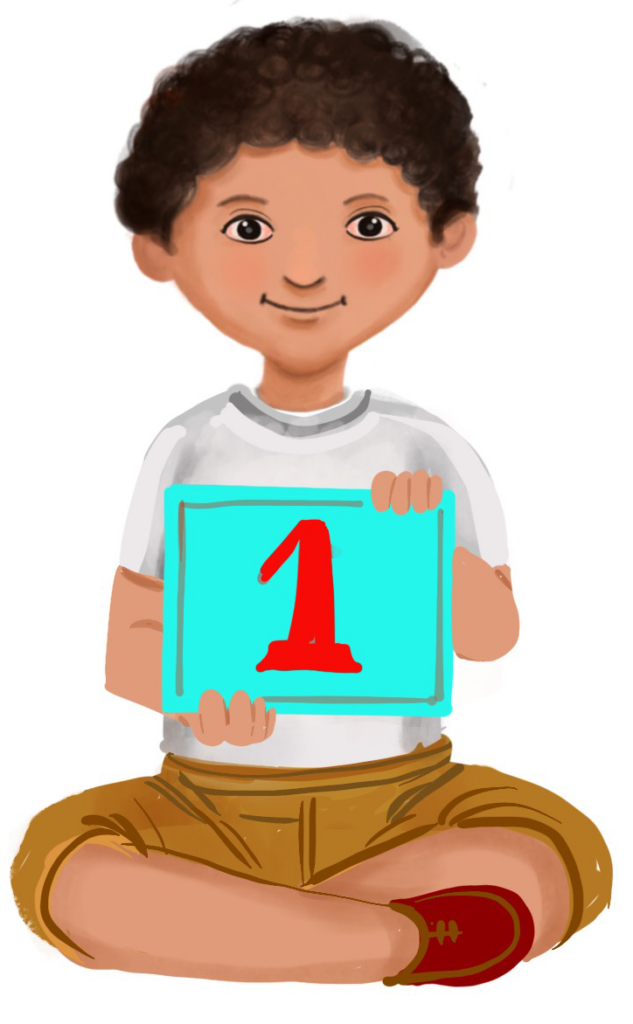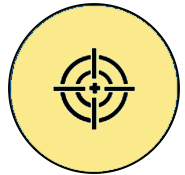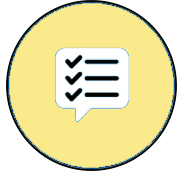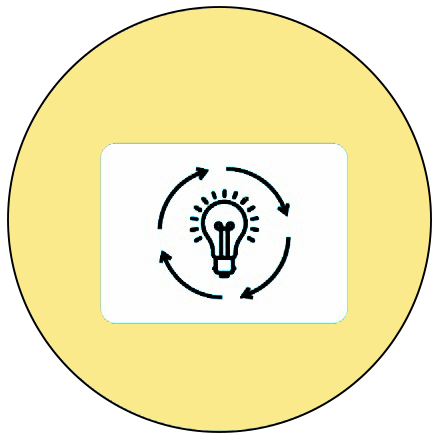
Measurement
Week 1 – Measure Length
Learning Outcome
Selects appropriate tools and units to perform simple measurements of the length of objects in their immediate environment.
 Objective
Objective
Children will be able to measure the distance between two points and the length of an object using nonstandard objects as measuring tools.
 Prerequisites
Prerequisites
- Children can identify long/short and tall/short objects.
- The teacher can have a simple check for understanding at the beginning of the lesson by asking the children to identify the long/short and tall/short objects by showing flashcards or real objects.
 Pre-teach Vocabulary
Pre-teach Vocabulary
Children should be familiar with the following terms: long/short, tall/short, compare, and distance.
Introduction: Who’s the Longest?
The teacher may begin by telling the children about the following incident:
A lion, a mouse, a peacock, and an elephant once lived in a jungle and were curious about who had the longest and shortest names. The lion declared, “I am strong and mighty.” I am hence lengthy. The mouse said, “My tail makes me long.” The peacock remarked, “I’ll be long too if I spread my feathers.” The wise elephant then remarked, “It’s unclear whose name is longer.” Let’s now count the letters that make up our names.
The teacher can then write the name’s letters in the proper squares on the chalkboard in the following manner:
| L | I | O | N |
| M | O | u | S | E |
| P | E | A | C | O | C | K |
| E | L | E | P | H | A | N | T |
The elephant said, “My name is long because it has eight letters, but the lion’s name is short because it only has four letters.” Hmm, yes. And everyone gave a yes and nodded their heads in agreement.
Video: Who’s the Longest? – Coming soon
ISL Video: Who’s the Longest? – Coming soon
Introduction Activity: I can measure
Materials required:
- Strips of chart paper with twenty 1×1 cm square boxes drawn.
- The number of strips required depends on the strength of the class. If 25 children are there, 25+1 chart strips are to be kept ready for the 25 children and one for the teacher.
- 4 or 5 scissors
The teacher asks, “Should we see who in our class, including me, has the longest name?” The teacher then gives each student a strip and instructs them to write their names in the strip, one letter in one box, and to cut off any boxes that aren’t used. In one strip, the teacher writes his/her name as well. The children count the number of boxes filled with letters in their names and speak it out loud once the chart strips are filled and the empty boxes are cut off.
The class can be divided into groups of five students each, and the teacher can help the group members figure out which of their names is the longest. Afterwards, the group could be expanded, and the children could determine who in the entire class has the longer and shorter name.
For everyone to see, the chart strips with the names’ letters on them can be tacked to the sticker board in descending order.
The children then line up in order of their name length, jump as many times as there are letters in their names, and then sprint back to their desks.
Video: I can measure – Coming soon
ISL Video: I can measure – Coming soon
Activity 1: Jump and Measure
Objective: To learn to measure the distance between two points using informal objects.
Importance of the activity for children:
Helps in developing:
- Fine motor Skills (Cutting with scissors, hand-eye Coordination)
- Gross motor Skills (Jumping, concentration)
- Cognitive Skills (Standing with the measured thread according to the distance covered)
- Social Skills (Cooperation, waiting for the turn, playing together)
- Spatial Awareness Skills (Navigating, and estimating the distance before jumping).
- Emotional Skills (Sense of achievement on completion builds self-esteem)
Resources required:
A bundle of thread, a pair of scissors, and a whistle
Setting for the activity:
The activity is to be done outdoors in an open playground.
Type of activity: Individual activity
Preparation of activity:
- The teacher should ensure 10 tracks are drawn in the open playground area.
- Keep a bundle of thread, scissors, and a whistle ready.
Role of the teacher: Demonstrator, observer and facilitator
Procedure:
- On each of the ten tracks, a child is to stand at the starting line.
- All the ten children standing on the allotted track should simultaneously start to jump with both legs and move forward as they leap on their designated track when the teacher whistles.
- When the second long whistle sounds, everyone should cease jumping.
- After halting, each child should mark the location.
- After measuring the distance with thread between the starting point and the present indicated location, each child should cut the thread.
- Organise the threads in a straight line on the ground.
- The person with the longest thread has covered the longest distance.
Observations:
The students are made to observe the result of the activity as follows:
- The teacher may ask the children to note how to jump with both legs and move forward.
- The children are made to observe that as one jumps forward, distance is getting covered.
- The same may be repeated for another group of ten children till all the children get their chance.
- The teacher can note down their observations and guide the students accordingly. For example, if the child is not confident of jumping, the teacher can guide by demonstrating.
Suggested Variation in th activity:
- Instead of jumping with both legs, forward frog jump or blindfold walking can be done.
- Keep the atmosphere light and fun-filled to encourage active participation.
- The distance can be measured using other informal objects instead of thread.
Conclusion:
Children would be able to measure the distance using nonstandard measuring objects and understand that measuring can be fun too.
Video: Jump and measure – Coming soon
ISL Video: Jump and measure – Coming soon
Activity 2: Guess and Check
Objective:
Children will learn to guess the length of objects and then check for its correctness using nonstandard objects of measurement.
Importance of the activity for children:
Helps in developing:
- Fine motor Skills (Measuring, writing, Hand-eye coordination)
- Gross motor Skills (Maintaining posture while measuring)
- Cognitive Skills (Guessing, comparing, focusing)
- Social Skills (Cooperation, playing together)
- Emotional skills (Sense of achievement on completion builds self-esteem)
Resources required:
- A few long pencils and a few short pencils
- Erasers of different sizes
- A few other objects, available around (like chalk, a water bottle, a book etc.)
- Paper clips and building blocks/Lego bricks
- Observation Sheet
Setting for the activity:
The activity can be done indoors or outdoors depending on the available space.
Type of activity: Group activity
Preparation of activity:
- The teacher will keep the objects to be measured in a cardboard box. (exclude the objects used as nonstandard measuring tools)
- The different objects should be of different lengths and sizes.
- The number of objects should be equal to or more than the number of students.
- A few nonstandard measuring objects – paper clips and building blocks / Lego bricks should be kept ready.
- Required number of Observation sheet with the required columns drawn should be kept ready.
Role of the teacher: Demonstrator, observer and facilitator.
Procedure:
- The teacher divides the class into groups of three children each.
- Each group should pick 3 objects from the cardboard box.
- Paperclips and building blocks will be distributed to each group as measuring instruments.
- An observation sheet to document the object’s measured length should be provided to each group.
- The teacher first demonstrates the activity as follows: When the teacher selects an object, let’s say a pencil, from the cardboard box, she will estimate its length in paper clips and record it as 10 in the estimate column of the observation sheet. When the object is actually measured, she will record the measurement, let’s say 11, in the next column of the observation sheet and present it to the students.
- She repeats the demonstration by estimating and measuring the length of the pencil using building blocks.
- After observing the demonstration, the children should guess the length of the three objects chosen by them in terms of paper clips and building blocks and record it.
- The group should then measure the three objects picked using the paper clips and building blocks and record it as follows. [Connect the paper clips and the building blocks / Lego bricks as required.]
Observation:
- Can the child make a reasonable guess of the object’s length using paper clips or blocks?
- Can the child accurately measure the object using nonstandard units and record the correct length?
- Can the child measure an object using a non-standard object without leaving gaps?
Suggested Variation in the activity:
- The teacher can start the activity by demonstrating with other nonstandard measuring tools.
- The difficulty level can be increased by increasing the number of nonstandard tools, the number of objects to be measured, and the number of members in the group.
Conclusion:
Children would learn to guess the length of objects, measure the length using nonstandard objects, and compare the result.
Worksheet: Observation Sheet – Coming soon
Worksheet: Observation Sheet (Enlarged) – Coming soon
Video: Guess and check – Coming soon
ISL Video: Guess and check – Coming soon
Activity 3: Build Me Tall and Win It All
Objective:
Children will learn to identify the tall and short objects.
Importance of the activity for children:
Helps in developing:
- Fine motor Skills (Cutting, pasting, gluing, Hand-eye Coordination)
- Gross motor Skills (Bending)
- Cognitive Skills (Visual processing, creating)
- Social Skills (Cooperation, working together, team effort)
- Language Skills (Concept formation like “tall, short, tower, compare”
- Emotional skills (Sense of achievement on completion builds self-esteem)
Resources required:
- Old newspaper sheets
- A few Scissors
- 2 Glue bottles
- Flash cards with an image of a tall object and a different short object [E.g., Tall building and short car, or tall tree and a small stick, or tall animal (elephant) and a short animal (cat)
Setting for the activity:
The activity can be done indoors.
Type of activity: Group activity
Preparation of activity:
The teacher will keep ready the materials required: Old newspapers, flashcards, scissors and glue.
Role of the teacher: Demonstrator, observer and facilitator.
Procedure:
- The teacher shows a flashcard and points to the tall object and short object and articulates their names. And then shows a few more flashcards and asks the children to tell the tall object and a short object.
- After familiarising the children with the concepts of tall and short, the teacher introduces the activity.
- The teacher divides the class into two groups.
- Each group is given old newspaper sheets of equal number – say 6 sheets.
- The teacher instructs the group to cut the newspaper into any shape they want and glue them to build a stable vertical structure.
- Half an hour is given.
- At the end of the time, the group that has constructed the tall structure is declared the winner.
Observation:
The teacher can observe the team spirit of the children and leadership skills. If any child is aloof, the teacher can encourage the child to participate by cutting or gluing.
Suggested Variation in the activity:
- Instead of newspapers play dough or Lego bricks can be provided to build the tower.
- The difficulty level can be increased by increasing the time and giving more newspaper sheets.
Conclusion:
Children would learn to work in teams and learn fine motor skills from each other. They will learn the concept of tall and short.
Assessment: Practice Worksheet – Circle the correct answer – Coming soon
Assessment: Practice Worksheet – Circle the correct answer (Enlarged) – Coming soon
Assessment: Worksheet – Circle the correct answer – Coming soon
Assessment: Worksheet – Circle the correct answer (Enlarged) – Coming soon
Check list for teachers:
| Activity | Yes | No | Sometimes |
| Children can: | |||
| Measure the distance between two points | |||
| Compare the lengths of objects | |||
| Guess the length of objects | |||
| Identify tall and short objects | |||
| Complete the activity in the given time | |||
| Do the activity independently | |||
| Express verbally and through actions, expressions or gestures | |||
| Enjoy teamwork, appreciate others and is willing to learn from others |
Home Activity: Printable worksheets
Worksheet: Look at the pictures and write L for long object and S for short object – Coming soon
Worksheet: Look at the pictures and write L for long object and S for short object (Enlarged) – Coming soon
Worksheet: Look at the pictures and write T for tall objects and S for short objects – Coming soon
Worksheet: Look at the pictures and write T for tall objects and S for short objects (Enlarged) – Coming soon
Cross-Curricular Connection:
- In Physical Education class:
Draw 5 big squares in pairs. Select 5 pairs of different objects of different lengths and place them in the squares. For example, in one square place a big football and in the other square small tennis balls. The teacher can call out small balls, and the children should run and occupy the small ball section. - In art class:
- Outlines of long/short objects can be given with the instruction to colour the long objects in one colour and the short objects in another colour.
- Children can be shown 5 objects and asked to draw a similar object longer/shorter or taller/shorter than the one shown. For example, a picture of a pencil can be shown, and the children may be asked to draw a pencil longer than the one shown or shorter than the one shown.
Adaptations for addressing learner variability: Adaptations and strategies – Coming soon
Teacher Resource Document – Coming Soon
| Source and Attribution of images: All images used in the above Assets and Aids are originally created. |
| This digital material has been developed by the Sri Sathya Sai Vidya Vahini Inclusive Education Project, a unit of Sri Sathya Sai Central Trust, Prasanthi Nilayam, as a collaborative offering in the service of our nation. |